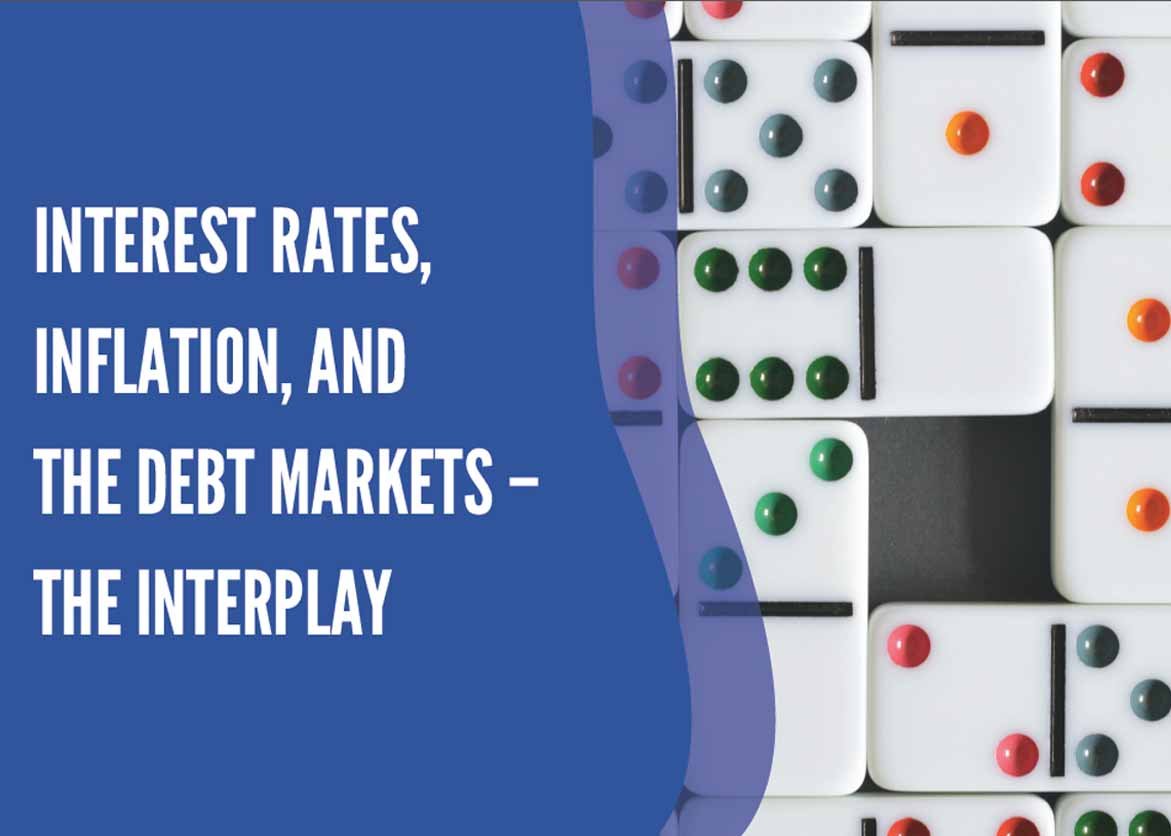Central banks across the globe are established to stabilize economic activity and promote prosperity. One of the ways they do this is by controlling the rates by which banks borrow money from other large banks to access cash and further lend in the local market. These central banks then loan this money at higher rates to institutions and consumers in the local market. Institutions use these loans for profit-generating activities, while consumers use them to add to their purchasing power. This loan system essentially gets money moving in an economy.
So, when we hear about rising rates, they refer to a rise or fall in these policy borrowing rates. These rates have a far-reaching impact on business activity because they essentially determine all of the loans in the country.
To gauge a country’s economic condition, these interest rates become crucial. These policy rates affect the interest on loans, mortgages, and even company bonds.
Inflation
Inflation is the rate at which prices rise over a specific period. If the demand for a product suddenly rises, but its supply remains constant, the lack of supply would raise the product’s price; this is ‘Demand-pull inflation’. On the other hand, if the demand for a product remained constant, but the cost of production rose due to a rise in cost of raw material, labour, etc., it would again lead to a surge in cost of the product. This rise is better known as ‘Cost-pull inflation’— inflation does not affect price alone; it affects interest rates, savings, debts, and wages as well.
Why does inflation go up?
Most would believe that a disparity between high demand and low supply is why inflation rises. Consider a hypothetical situation in the current scenario; imagine a sudden rise in demand for Air Conditioners due to the heatwave. The supply for the product is low, but there is no liquidity in the market, (here liquidity is in reference to the money in the hands of the consumer). So, if people do not have the money to buy an AC, will the cost of the AC rise?
Hence, it is when the demand and supply gap is accompanied by high liquidity that inflation takes place. To control inflation, the Central Bank must control liquidity.
In India, a comfortable spot for the country is to curtail inflation between 2% to 6%. There was an off-cycle rate cut in May 2020 accompanied by a major liquidity push (via low-interest rates on loans) by the government in response to Covid Support. Since then, we have witnessed BAU activities normalize in a post-covid world.
But, ‘If the Fed sneezes, India catches a cold,’
This statement has often displayed our dependencies and interconnectedness to the dollar and the US economy. Inflation in the United States has shot up 8.4% over the year to the end of March, hitting a 41-year high , causing another reason for a jump in inflation. Then the sanctions due to the Ukraine-Russia war have now affected commodity prices and disrupted trade. We are witnesses to a simple example in the rise of crude oil since the Russian-Ukraine began. This table displays how India’s GDP growth is impacted by every 10% increase in oil prices. Hence, if the macro is severely affected, the repercussions on final consumers are bound to occur.

Therefore, at present, a combination of liquidity in the markets and rising inflation is where we find ourselves.
Inflation and Interest Rates
One of the most potent ways to curb inflation is by reducing liquidity in the market. This is done by raising the interest rates (Repo Rate). A rise in repo rates directly affects the interest rates by financial lenders, which in turn means lesser borrowings by institutions and consumers and lesser demand for products. While this move does help curb inflationary figures, it has a trickle-down effect on businesses.
Debt market
Higher interest rates make it more difficult for businesses to thrive, reducing the firm’s capacity to thrive and impacting its stock price value. Similarly, new bonds with high-interest rates will be introduced, making existing bonds with lower interest rates less desirable. Rising interest rates suggest that debt investments face a price decline in the short run while bond prices rise when yields decrease and vice versa.
The global situation remains unpredictable, and the RBI is expected to raise interest rates more substantially in the coming months. This raises the risk of volatility.
Will RBI hike rates further?
Will US Fed’s expected rate hikes further spook the markets?
Where are we currently in the debt markets?
If these are questions running through your head, we have the right person to answer them.
Join us on 13th May, Friday at 5:00 pm, as we interact with Fixed Income Specialist Suyash Chaudhary from IDFC MF as he speaks about the current environment and how investors can navigate the uncertainty on the topic title Risk of Over Simplification – Cases in Current Debt Market
SIGN UP NOW by clicking the link: https://bit.ly/38xPaOI






